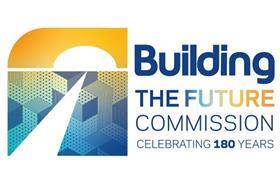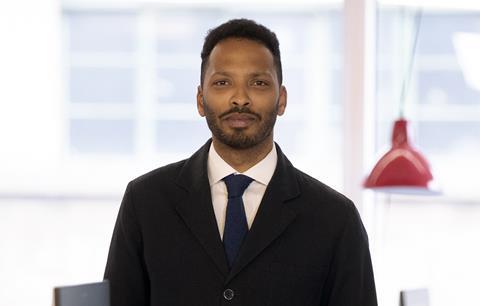Neal Shasore discusses the rise of diversity and social value networks, a lack of industry communication and the need for rapid change

║├╔л╧╚╔·TV magazine is 180 years old this year. What lessons about the built environment should we take from the past?
There are too many to count тАУ there are so many radical ideas about pedagogy and the nature of professionalism that feel very timely.
But the frenetic debates about reform of architectural education in the late nineteenth century тАУ some of those Ruskinian lines of architectural thought elaborated by the likes of Lethaby тАУ have real relevance for our current moment.
Who or what has had the most positive impact on construction in the past couple of decades?
The extraordinary variety of networks and social enterprises that have sprung up to support diversity and social value in the construction industry and built environment sector.

What does the construction industry do well and why?
It builds places and homes тАУ its тАШoutputтАЩ surrounds, frames, mediates every aspect of our lives.
What does construction industry do badly and why?
Its different aspects donтАЩt always communicate with each other as effectively as they might. It provides good training but too often in siloes, and in ways that do not engage the diversity of our society and communities.
WhatтАЩs the biggest change youтАЩve seen during your career in construction?
The beginnings of a shift in attitude towards climate change and environmental sustainability; the beginnings of a shift in attitude to equity and diversity
>> Click here for more about the commission
What do you think will have changed by the time ║├╔л╧╚╔·TV celebrates its 200th anniversary?
I hope quite a lot will have changed, or weтАЩre screwed!
If there is one thing individuals and firms could do to improve construction and the built environment, what would it be?
Establish a common and mutually respectful educational framework across the built environment; tackle the systemic, structural and regulatory barriers to the production of a healthy and sustainable built environment
What is the best thing government can do to support the industry?
Stop talking about beauty? Procurement reform?
What do you hope the ║├╔л╧╚╔·TV the Future Commission can achieve? And what role can you play?
Look holistically at the challenges the industry face; provide a detailed and nuanced blueprint for reform; give the wider sector a clearer sense of how to build evidence-based, radical, affordable, accessible, integrated built environment education, delivering green skills for a just transition.
What is your favourite building/piece of infrastructure and why?
At the moment, Seaforth Crescent by Darbourne and Darke in Islington.
Neal Shasore is the head of school and chief executive of the London School of Architecture
║├╔л╧╚╔·TV the Future Commission

Coming up on the ║├╔л╧╚╔·TV the Future commission:
In the coming weeks we will:
- Host our first regional roundtable with our partner Constructing Excellence in the East of England region in mid March
- Convene our first commissioner panel meeting at the end of March
- Investigate the potential of building performance rating system NABERS as an alternative to Part L for the energy and net zero stream
- Interview two big hitters in the world of infrastructure for the infrastructure stream
- Examine whether the qualifications landscape needs to change and assess whether more flexibility is needed for our education and skills stream
- Visit the University of Salford to assess the eHome2 concept for our energy and net zero stream
- Investigate how for-profit affordable housing can deliver the homes we need for the housing and planning stream
- Assess a new model of procurement used by the Ministry of Defence for the project delivery and digital stream
- Look at models of flexible working in the industry for the workplace, culture and leadership stream
About the commission
The ║├╔л╧╚╔·TV the Future Commission is a year-long project, launched to mark ║├╔л╧╚╔·TVтАЩs 180th anniversary, to assess potential solutions and radical new ways of thinking to improve the built environment.
The major projectтАЩs work will be guided by a panel of 19 major figures who have signed up to help guide the commissionтАЩs work culminatuing culminate in a report published at the end of the year.
The commissioner include figures from the world of contracting, housing development, architecture, policy-making, skills, design, place-making, infrastructure, consultancy and legal.
The commissioners include Lord Kerslake, former head of the civil service, Katy Dowding, executive vice president at Skanska, Richard Steer, chair of Gleeds, Lara Oyedele, president of the Chartered Institute of Housing, Mark Wild, former boss of Crossrail and chief executive of SGN and Simon Tolson, senior partner at Fenwick Elliott. See the full list here.
The project is looking at proposals for change in eight areas:
- Education and skills
- Housing and planning
- Infrastructure
- ║├╔л╧╚╔·TV safety
- Project delivery and digital
- Workplace culture and leadership
- Creating communities
>> EditorтАЩs view: And now for something completely positive - our ║├╔л╧╚╔·TV the Future Commission
>> Click here for more about the project and the commissioners
║├╔л╧╚╔·TV the Future will also undertake a countrywide tour of roundtable discussions with experts around the regions as part of a consultation programme in partnership with the regional arms of industry body Constructing Excellence. It will also set up a young personтАЩs advisory panel.
We will also be setting up an ideas hub and we want to hear your views.
>> Email buildingfuturecommission@building.co.uk to get in touch


























No comments yet